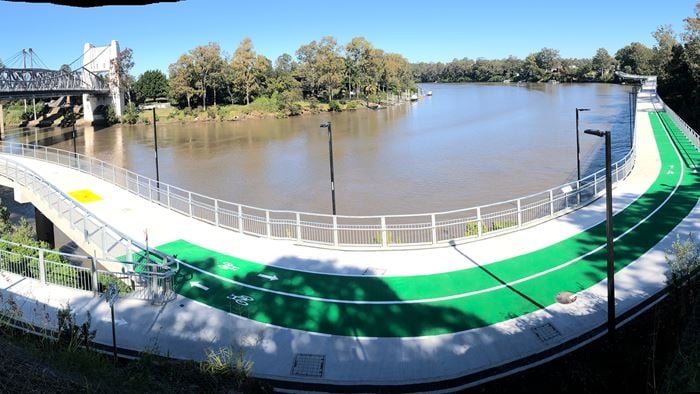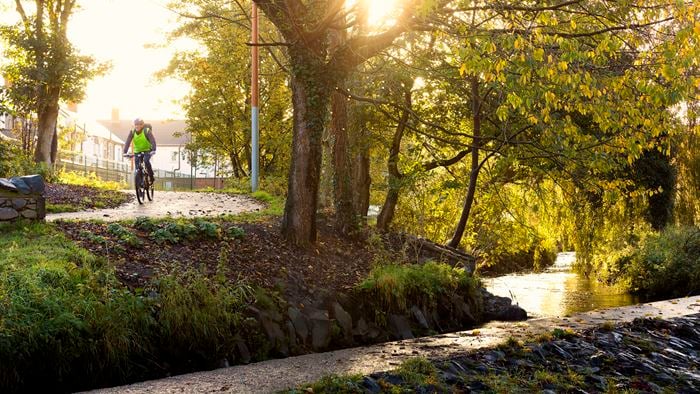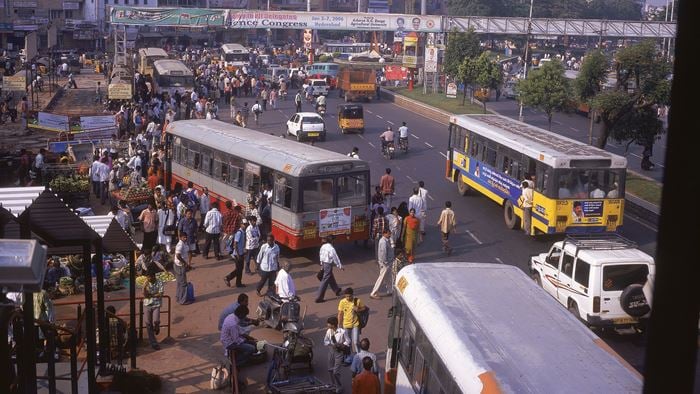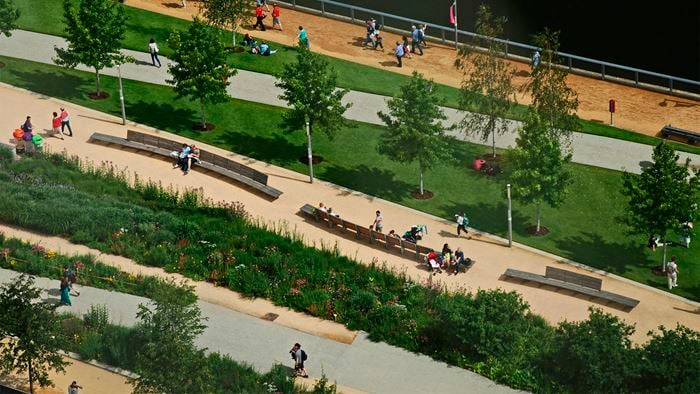Dubai’s blue skies and warm weather have made it a popular destination for tourists. However, getting around this sprawling city during the hot and humid summers can be a challenge. Many air conditioned buildings are regularly set at temperatures of around 18ºC, which means that people experience thermal shock when they walk out into temperatures that, in the summer months, can exceed 45ºC. Pedestrians face a number of additional difficulties, including poor continuity of footpaths, the dominance of traffic and the fact that whole communities are intersected by 12-lane highways.
Creating a safe and convenient path
Dubai’s new metro system has so far exceeded its targets. However, the local climate means that, unless people live close to a bus or metro stop, they face an uncomfortable walk in the heat. Keen to build on the metro’s initial success, Dubai RTA asked Arup to develop proposals to extend the walking catchments, with particular emphasis on low energy options.
One answer is a pedestrian walkway – pedway – that provides a quick and convenient means of moving between public transport and residences, offices, shopping malls and community facilities, while protecting pedestrians both from the traffic that dominates the city and from the aggressive heat. Arup’s approach is to ‘split the difference’ between these two extremes and develop a range of options that mitigate the problem. One of these is a naturally-ventilated pedway that increases pedestrian safety and mobility without the need for extensive air conditioning.
The team looked at existing pedways in other cities, including Mumbai, Hong Kong, Toronto and Chicago. They proposed a shaded structure with a high thermal mass as the best way to avoid the problem of solar gain, while capitalising on the heat retention of the structure itself to keep cool, with fans to create airflow.
Design led by thermal sensation
Arup’s microclimate experts modelled thermal comfort and sensations over time starting from walking in the winter sun to define a comfortable transient sensation level. They analysed transient comfort, considering walking speed, metabolic rate and walking distances. This led to the proposal that the pedway would need air conditioning at regular intervals to bring thermal sensation back down between naturally ventilated sections.
The team provided three case studies to illustrate the proposition: one tunnel, one low-energy open structure, and one that is enclosed and AC cooled. The study created a flexible framework for pedway development and implementation that could be developed organically, connecting more and more commercial and leisure buildings to become a vital part of the city’s transport infrastructure. It also explored funding and revenue models that would offset the capital costs.
Arup’s feasibility study shows how a Dubai pedway could be developed, increasing access to public transport and bringing with it commercial sponsorship opportunities such as retail kiosks and advertising space. It also sets out guidelines and mechanisms for a flexible system of connected walkways that could continue to develop and grow, alongside the city itself.
.jpg?h=1125&w=2000&hash=3ED52DA2C5EC3BF1079075CEB4BC492E) ;
;







